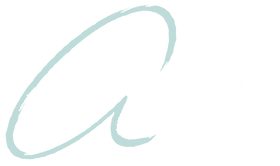face mapping 101: what breakouts mean & how to calm them
Struggling with “mystery” breakouts that seem to pop up in the same spots? Face mapping is a simple, intuitive way to notice patterns—so you can tweak habits, products, and routines without playing guess-and-check forever. It isn’t a diagnosis, but it can be a helpful guide to understand common triggers and make small changes that lead to clearer, calmer skin.
Quick Guide (at a glance)
- Forehead: stress, sleep, hair products, sweat
- Between brows: rich/oily foods, occlusive makeup, not fully cleansing
- Nose: congestion, blackheads, pore buildup
- Cheeks: phone/sheets/masks touching skin, pollution, dairy sensitivity
- Jawline & chin: cyclical hormones, high-sugar snacks, picking
- Hairline & temples: haircare residue, hats/headbands, sunscreen not fully removed
- Around lips: spicy/acidic foods, lip products migrating, toothpaste SLS
Gentle reminder: everyone’s skin is unique. Use these notes as a starting point, not a rulebook.
Forehead Breakouts (including hairline)
What it might mean
Stress + late nights, sweat from workouts, or residue from dry shampoo and styling creams can clog pores along the forehead and hairline.
Try this
- Cleanse after workouts and before bed.
- If you use dry shampoo or hairspray, apply before skincare and keep it away from your hairline.
- Choose lightweight, non-comedogenic hydrators.
Encouraging note: consistency beats perfection. Even two weeks of better cleanse habits can show a visible difference.
Between the Brows (“the 11s” area)
What it might mean
Heavier makeup, rich balms, or not fully removing sunscreen can congest this zone.
Try this
- Double cleanse in the evening when wearing makeup or SPF.
- Keep leave-in hair oils from migrating onto the center of your forehead.
- Blot—don’t rub—after cleansing to avoid irritation.
Nose & Sides of the Nose
What it might mean
Blackheads and visible pores here are normal; they’re just more active. Congestion can build when SPF or foundation settles in creases.
Try this
- Use a gentle exfoliating cleanser a few times per week to keep pores clear.
- Press (don’t drag) your moisturizer around the nostrils to avoid buildup.
- Pat in a lightweight, balancing serum if you get shiny midday.
Cheeks (including mask area)
What it might mean
Friction + bacteria from phones, pillowcases, and face coverings; plus possible sensitivity to dairy or ultra-rich creams.
Try this
- Wipe your phone screen daily and change pillowcases 2–3× weekly.
- If you suspect dairy sensitivity, try reducing for 2–3 weeks and note changes.
- Choose breathable textures and give skin a few minutes to dry before masking up.
Chin & Jawline
What it might mean
This zone often responds to hormonal shifts (hello, monthly cycle) or high sugar snacks. Touching/picking can keep inflammation going longer than the original clog.
Try this
- Track your cycle; pre-emptively simplify your routine the week before.
- Keep hands off (we know—it’s hard!). Use a targeted spot product instead.
- Balance evening routines: cleanse, treat, hydrate—no need to pile on steps.
Encouraging note: cyclical breakouts are common and manageable; small consistent habits win here.
Temples & Hairline Corners
What it might mean
Residue from headbands, hats, and haircare. Mineral sunscreen at the hairline can also linger if it’s not fully removed.
Try this
- Cleanse to the edges of the hairline (most of us stop short!).
- If you wear hats/headbands, rinse skin after prolonged wear.
- Use a lightweight moisturizer that won’t compete with hair products.
Around the Lips & Mouth
What it might mean
Spicy/acidic foods, lip products traveling beyond the lip line, or toothpaste with sodium lauryl sulfate (SLS).
Try this
- After brushing, rinse and gently cleanse the area to remove residue.
- Apply lip products carefully and keep balms off the surrounding skin.
- If spicy foods trigger you, soothe with a calming, barrier-friendly hydrator at night.
Meet the ästhetik Clear Skin Collection: What Each Product Does & When to Use It
A calm, clear complexion doesn’t need a 12-step routine. The ästhetik clear skin collection is designed to keep things simple, gentle, and effective—so you can show up consistently and let your skin reset.
-
Reset Cleansing Oil —
Why: melts sunscreen and long-wear makeup so they don’t linger in pores.
When: first cleanse at night, then Clarity Cleanser.
-
Clarity Cleanser —
Why: gentle daily gel that lifts sweat, oil, and city dust without the tight, squeaky feel.
When: AM/PM and post-workout.
-
Refresh Exfoliating Cleanser —
Why: a few-times-a-week boost with glycolic + willow bark for smoother, clearer pores.
When: 2–4× weekly (PM), skip on retinol nights.
-
Vitamin C Serum —
Why: brightens the look of uneven tone; uses gentle, stable SAP—great for breakout-prone skin.
When: AM under moisturizer + SPF.
-
Retinol Serum —
Why: supports gentle renewal for smoother texture and fewer lingering marks.
When: 2–3 nights/week (PM only); moisturize well.
-
Clarity Moisturizer —
Why: lightweight hydration that won’t suffocate pores; keeps skin comfortable.
When: AM/PM after serums.
How to put it together (simple plan)
Evenings: Reset Cleansing Oil → Clarity Cleanser → (Refresh Exfoliating Cleanser on alternate nights) → Retinol Serum (2–3×/wk) → Clarity Moisturizer
Mornings: Clarity Cleanser → Vitamin C Serum → Clarity Moisturizer → SPF
Pro tip: introduce one new product at a time and give it 2–3 weeks. Steady beats fast.
Explore the ästhetik clear skin collection →
Pro Tips You Can Start Today
- Hands off: touching spreads oil/bacteria and triggers more inflammation.
- Laundry matters: fragrance-heavy detergents and fabric softeners can irritate cheeks and jaw.
- Workout wins: cleanse ASAP after sweating; bring a mini cleanser to the gym.
- Slow + steady: introduce only one new product at a time and give it 2–3 weeks.
- Kindness counts: over-stripping fuels more oil. Aim for balanced, not “squeaky.”
When to See a Pro
If breakouts are painful, cystic, or not improving after 6–8 weeks of consistent, gentle care, it’s worth booking a personalized consult with an esthetician. We can help you streamline your routine, minimize triggers, and choose the right ästhetik formulas for your skin.
FAQ (for quick answers)
Is face mapping legit?
It’s a helpful observational tool, not a medical diagnosis. Use it to spot patterns and adjust habits that may be triggering breakouts.
How long until I see results?
With consistent cleansing and targeted care, many people notice improvement within 2–4 weeks; deeper changes can take 6–8 weeks. Steady routines beat quick fixes.
Should I change my diet?
You don’t have to overhaul everything. Start small—hydrate more, watch added sugars, and note how dairy affects your skin. Keep a 2–3 week journal to spot patterns.
Can I exfoliate if I’m breaking out?
Yes—gently. Aim for 2–4×/week with a skin-friendly formula and skip on retinol nights. Over-exfoliating can backfire and increase irritation.
When should I see a pro?
If breakouts are painful, cystic, or not improving after 6–8 weeks of consistent care, book a consult with an esthetician for a personalized plan.


